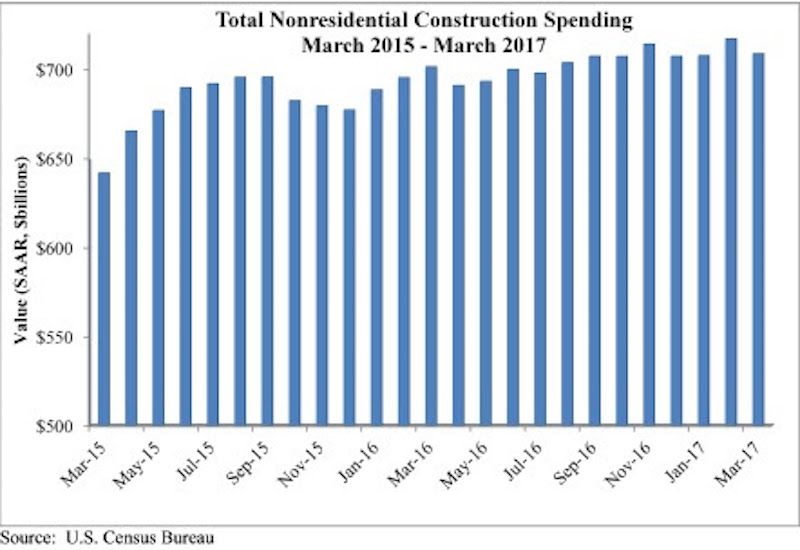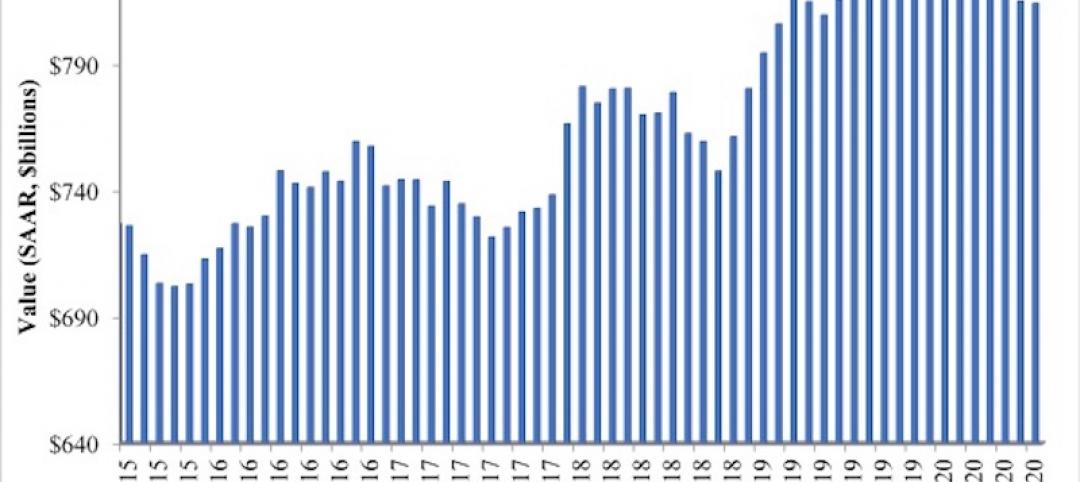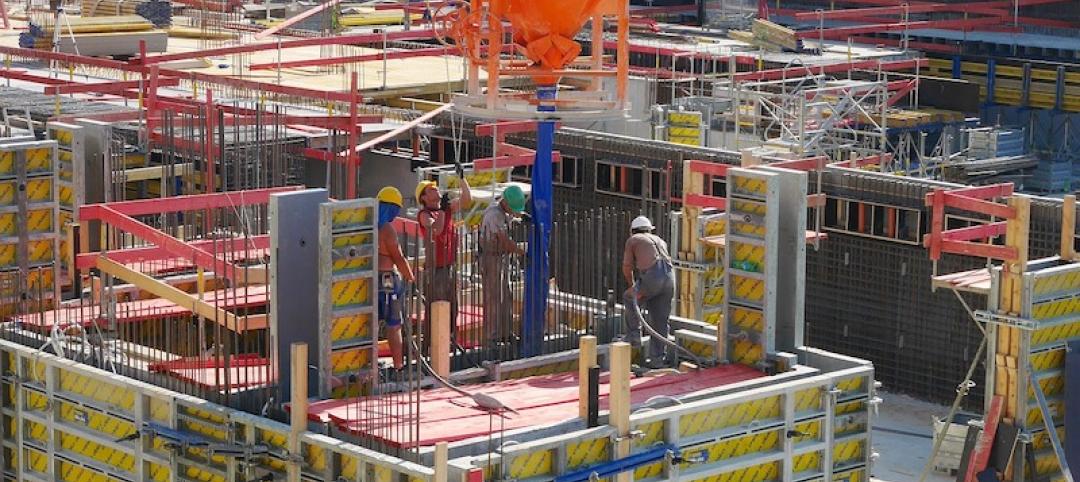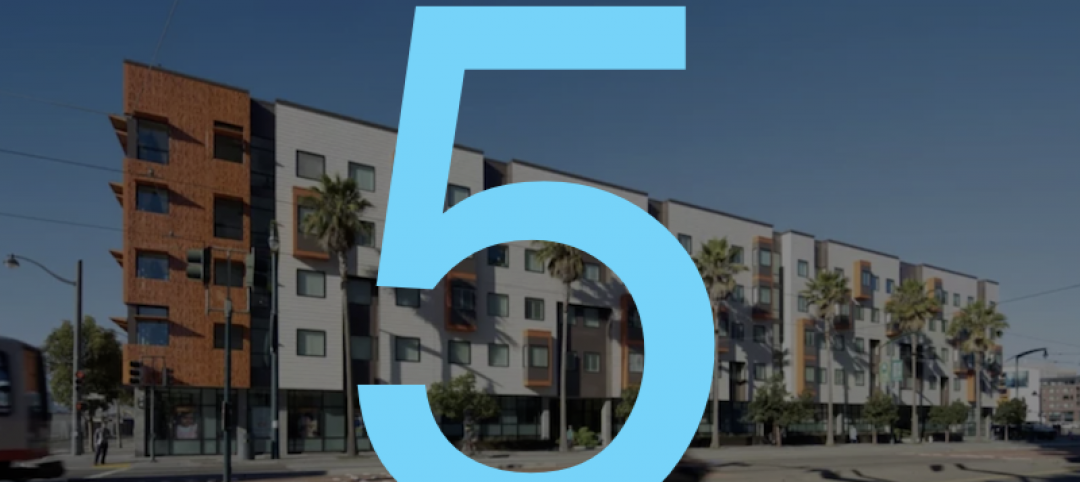Nonresidential construction spending fell 1.2 percent in March, according to analysis of U.S. Census Bureau data recently released by Associated Builders and Contractors (ABC). Spending in the segment totaled $708.6 billion on a seasonally adjusted, annualized basis, however the decline is less dramatic than it may be perceived to be given that February’s initial estimate of $701.6 billion was upwardly revised to $717 billion, making it the highest level or spending recorded in the data series.
In March, private nonresidential construction spending fell 1.3 percent for the month, but remains up 6.4 percent on a year-ago basis. Public nonresidential spending decreased by 0.9 percent and is down 6.5 percent year over year. Were it not for the manufacturing subsector, where spending has contracted 9.7 percent from the same time last year, overall spending would have increased from February and set a new record high for construction spending.
“There are at least two tales to tell, and neither one of them is particularly uplifting,” said ABC Chief Economist Anirban Basu. “One narrative relates to public spending, which remains soft. Even categories in which one might have expected spending growth have not experienced an increase over past year. For instance, one might have anticipated stepped-up spending in the water supply category given the events in Flint, Mich. But spending in that category is down by roughly 14 percent over the past year. Similarly, one might have predicted spending increases in the highway and street category since the Fixing America’s Surface Transportation Act was passed in December 2015. However, spending in that category is down 2.4 percent on a year-over-year basis.
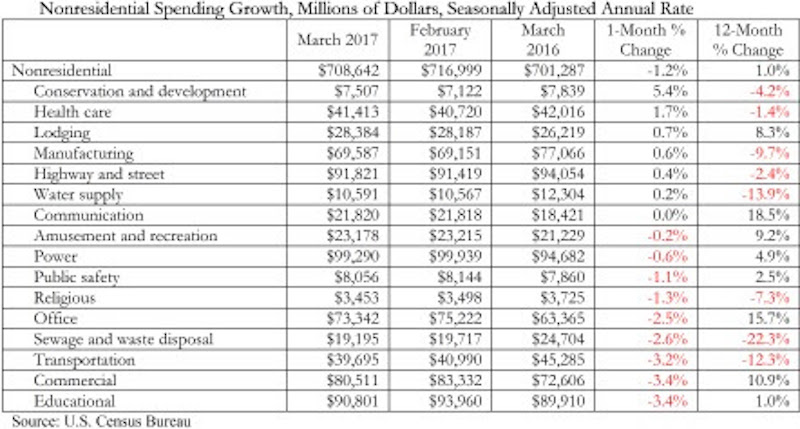
“Private construction spending has lost momentum as well, perhaps because developers and their financiers are becoming increasingly unnerved by the possibility of mini-bubbles in certain commercial real estate segments,” said Basu. “Many investors may also have adopted a wait-and-see attitude regarding policies coming out of Washington, D.C., including those related to proposed tax reform and infrastructure spending initiatives. Perhaps as a result, office and commercial-related construction spending declined in March. Still, other data suggest lingering momentum in various privately-financed segments, and data from the most recent GDP report indicate that investors continue to invest aggressively in structures. It is for this reason that today’s construction spending release is at least somewhat surprising with respect to private investment in structures. An upward revision to today’s data may be forthcoming.
“Looking ahead, all eyes are on Washington, D.C,” said Basu. “A pro-business agenda remains in the works, but little of it has been implemented thus far. Financial markets continue to express confidence regarding the ultimate execution of significant portions of this agenda, but if it remains bogged down politically, market confidence will wane and private construction spending will continue to be erratic.”
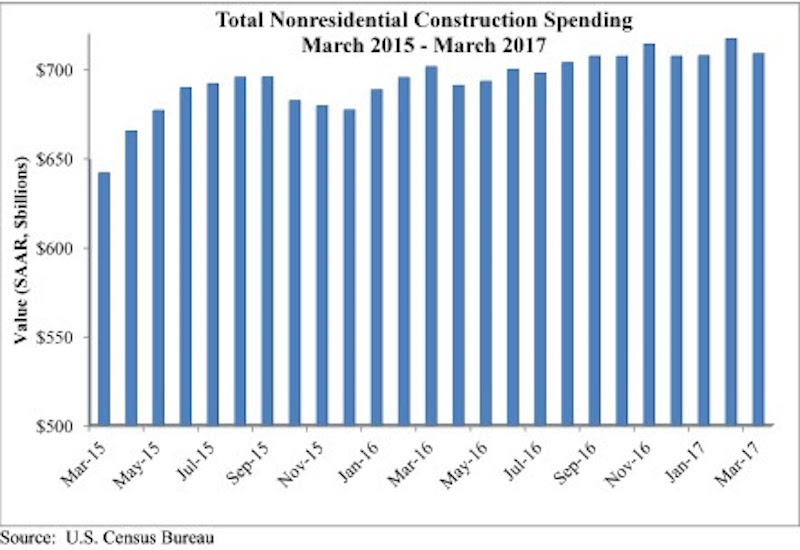
Related Stories
Market Data | Oct 5, 2020
Nonresidential construction spending falls slightly in August
Of the 16 nonresidential subcategories, nine were down on a monthly basis.
Market Data | Oct 5, 2020
Construction spending rises 1.4% in August as residential boom outweighs private nonresidential decline and flat public categories
Construction officials caution that demand for non-residential construction will continue to stagnate without new federal coronavirus recovery measures, including infrastructure and liability reform.
Market Data | Oct 5, 2020
7 must reads for the AEC industry today: October 5, 2020
Zaha Hadid unveils 2 Murray Road and the AEC industry is weathering COVID-19 better than most.
Market Data | Oct 2, 2020
AEC industry is weathering COVID-19 better than most
Nearly one-third of firms have had layoffs, more than 90% have experienced project delays.
Market Data | Oct 2, 2020
6 must reads for the AEC industry today: October 2, 2020
BIG imagines how to live on the moon and smart buildings stand on good data.
Market Data | Oct 1, 2020
Two-thirds of metros shed construction jobs from August 2019 to August 2020
Houston-The Woodlands-Sugar Land and Brockton-Bridgewater-Easton, Mass. have worst 12-month losses, while Indianapolis-Carmel-Anderson, Ind. and Niles-Benton Harbor, Mich. top job gainers.
Market Data | Oct 1, 2020
6 must reads for the AEC industry today: October 1, 2020
David Adjaye to receive 2021 Royal Gold Medal for Architecture and SOM reimagines the former Cook County Hospital.
Market Data | Sep 30, 2020
6 must reads for the AEC industry today: September 30, 2020
Heatherwick Studio designs The Cove for San Francisco and Washington, D.C.'s first modular apartment building.
Market Data | Sep 29, 2020
6 must reads for the AEC industry today: September 29, 2020
Renovation to Providence's downtown library is completed and Amazon to build 1,500 new last-mile warehouses.
Market Data | Sep 25, 2020
5 must reads for the AEC industry today: September 25, 2020
AIA releases latest 2030 Commitment results and news delivery robots could generate trillions for U.S. economy.


